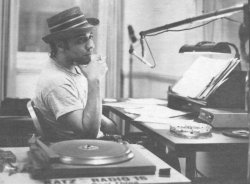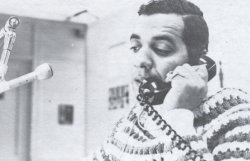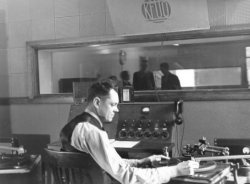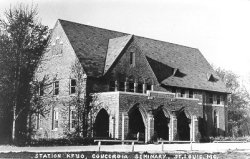Radio Articles
When St. Louis Got the Q
They called it the “Q” format, and it made a big impression in St. Louis.
And according to those who were on the ground floor, getting there was a lot of fun.
Q hit St. Louis compliments of Bartell Broadcasting, which purchased KRCH in August of 1972. Studios remained in the same place at 111. S. Bemiston in Clayton. The call letters were changed almost immediately to KSLQ, and within a year, the station’s power had been upgraded from 76,000 to 100,000 watts. Al Casey arrived on the scene from Bartell’s Detroit property to engineer the format change from middle-of-the-road music to Q, which would steal away a huge chunk of KXOK’s AM Top 40 listeners.
KXOK had been the station of choice for young people who wanted to hear Top 40 radio. Other rock fans got their kicks with KSHE and KADI on the FM dial. Bartell was breaking through that invisible barrier by bringing high-energy pop to FM radios in St. Louis.
Jonnie King remembers a great work environment, and a trick that created a high-energy sound. “We slightly tweaked up the rpm’s on some of our uptempo hit records. The reasoning was simple: If you were listening to KXOK on AM and switched over to KSLQ-FM and heard the same song, you’d swear we sounded better!”
Peter Skye was working at KADI-FM at the time, and in a conversation with KSLQ’s engineer, learned that program director Al Casey wasn’t happy with the way Q’s sound compared to KADI’s. Skye offered to come over and show them how to adjust the equipment but swore Casey to secrecy, so KADI’s owners wouldn’t know he’d “helped” the competition. But a couple weeks later KADI’s studios burned and KSLQ invited KADI to use Q’s spare studio until replacement space could be found, thus returning the favor.
Skye, who became a Q disc jockey in 1974, remembers, “Jonnie did callout research constantly, asking people he selected randomly from the phone book what they listened to and the names of their favorite artists and songs.”
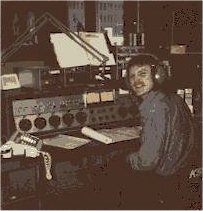
JoJo Kincaid was part of the Q’s jock staff, and he remembers a high-energy creativity that permeated the on-air side of the building. “GM Ted Smith had mannequins of a mom, dad and two teenaged kids placed just outside the on air studio to remind jocks of our target audience. Considering the fact that most of the air staff at that time were males in our early 20s with ‘creative minds’ to boot, you can imagine the pornographic situations those adjustable, plastic humanoids wound up in.
“Day after day you would come in and find mommy and daddy in different sexual positions…Ted had absolutely no sense of humor. He hit the roof, threatened everyone’s job and ended up removing our demographic inspiration.”
Young Bobby Day says he would occasionally forget the mannequins were outside the studio door and would be startled by them if he came out in a hurry. “I even think I said ‘hi’ to them a few times. Strange thing is, they said ‘hi’ back.”
Young, creative, inspired talent gave KSLQ the early boost it needed. The energy seemed to come pulsing out of the speakers of listeners all over St. Louis. Deejay Gary Bridges has fond memories of one of his assistants. “Frank Accarino was answering phones for me during my show while trying to convince me that he wasn’t hustling the female callers. He just liked to get a rise out of them. Frank was way too smart for the job.
“Mike Jeffries was way too smart to be a deejay, but that’s what he wanted to be. He had a weakness for Mallomar Cookies, which you couldn’t buy in St. Louis back then. Always dated the best-looking women.”
But one of the most creative was Bill Taylor. Bridges remembers his knack for technical work with telephone lines “constructing elaborate party-line calls among nighttime deejays all over the country. He would sit at the grand switcher and ring the hotline numbers of a dozen or more stations, dump us all on a single line to compare notes and, occasionally, all start a song at the same time in cities all across America.”
Terry Fox was 20 when he started at KSLQ, moving over from a disc jockey gig at KWK. “All the guys on the air were single and young and we all loved playing radio and having fun. We even hung out together when we weren’t at the station.”
Fox remembers a station promotion called “The Un-Lottery” based on Jack McCoy’s “Last Contest” on KCBQ in San Diego. “We had 98 different prize packages. They were astounding. Chuck Roberts was our program director at the time. We were just coming up with these prizes off the top of our heads. We blew out the Clayton phone system with listener response. The kid who won wanted the Rolls Royce but he settled for $10,000 cash which is a good thing because we couldn’t afford to give him the car.”
Bartell’s brainchild brought energetic Top 40 radio to the FM dials of St. Louis, and those who were a part of the evolution have nothing but fond memories of the time.
It’s impossible to describe on this page the electricity that permeated the hallways of KSLQ in the 1970s.
Although many on the air staff were part of broadcasting’s proverbial revolving door as management struggled to find the “right” people, those who worked there describe it as the best time of their broadcast careers. In the words of Gary Bridges, “While most other St. Louis stations had long-established air staffs, we swapped out dozens of parts ‘til we found a committed staff of people who worked, and who loved to work…From the day Bartell took over KRCH, the pressure was on to win in St. Louis.”
Terry Fox was “20 or 21 when I got to KLSQ. Here I was in my hometown making radio history. This was FM and the whole market was listening!”
Young Bobby Day, “Working at KSLQ was extremely fun and it was a reflection of the high passion for radio that we had as a staff…The station had a great vibe and we were just radio hippies having the time of our lives together.”
As with most media in those days, there was a business side and a “production” side that developed the public product, in this case, the on-air sound. Corporate program director George Wilson publicly referred to his company’s disc jockeys as “pieces of meat. Instead of causing rebellion, the remarks were largely ignored. After all, the station had soared to the #2 position in the market. The kids must have been doing something right.
Station manager Ted Smith, who always took pains to let you know he’d been a fighter pilot in the Royal Air Force, became the perfect foil for his young on-air staff. His tightly buttoned-up demeanor was that of a too-strict father in a houseful of teenagers. This actually worked to his advantage, giving the on-air guys a rallying point that helped create an us-against-him mentality.
Mike Jeffries, who was also known as The Red Baron, was a grad student when he began working at KSLQ. “Studio G-1 was a dump,” he remembers. “While Bartell built new studios on the third floor, we slaved in the basement, really about three steps down off the lobby at 111 S. Bemiston.”
There were plenty of young women, too. The station format had a strong appeal to them, and they were as close as the request line. Announcers never wanted for dates or companionship. Mike Jeffries: “Otis Thomas was a riot. If you heard ‘Stairway to Heaven’ followed by ‘Nights in White Satin’ followed by ‘American Pie’ during his overnight shift, you knew the Boogie Man was in hog heaven.”
(Reprinted with permission of the St. Louis Journalism Review. Originally published 9/05.)
